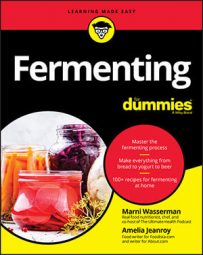When you begin exploring the world of fermentations, you'll hear people talking about sourdough, sourdough starters, and wild yeasts. A sourdough starter is really just another name for any fermented grain. It's a grain that starts to predigest during the fermentation process, which ultimately makes the flavor more sour.
Here are just a few great reasons to make your very own sourdough:
Sourdough is delicious.
Sourdough helps improve your digestion.
Sourdough predigests gluten and phytic acid.
Sourdough saves you the cost of buying commercial yeasts.
Making the sourdough starter and keeping it alive is fun.
You can use anything from spelt flour to whole wheat to kamut to other ancient grains to experiment with sourdough. You'll be surprised just how many recipes you can make, from muffins to pancakes to breads . . . anything goes!
Feeding your sourdough starter
If you care about your sourdough starter, you'll feed it. Just like your body, sourdough requires food. The fermentation process feeds off of the sugars and carbohydrates in the flour. To keep the sourdough alive, consistent and regular feeding of flour is required. As long as you keep feeding your sourdough and store it in a good environment, it will stay alive, and you can keep making more recipes with it.
Sometimes you'll even hear people call the sourdough starter the mother because it creates other sourdough babies. Sourdough starter is very different from commercial yeasts, which require you to continue buying them and have a strong need for a stable environment. Sourdough is unique because it predigests the gluten and phytic acids in the grain.
Choosing the type of sourdough starter to use
All sourdoughs require a sourdough starter, the essential life force that makes your amazing breads and other recipes. The interesting thing about these starters is that they take on the flavor of the naturally occurring yeast and bacteria in your environment and the flour you use. From one batch to the next, each sourdough is a bit unique and different from the last!
You can purchase dry sourdough starters or find a friend who has a wet sourdough starter. Starting your own is possible but can take up to one week.
A dry sourdough starter may come as a dehydrated formula that contains sourdough yeast. (Look out for more traditional starters rather than manufactured yeasts for better flavor.) A wet sourdough starter is a more traditional culture that has been started from scratch, fed continuously with flour, and is now bubbling and alive. It's actually wet and sticky. When such a wet starter is fully thriving, it should be fed with water and flour at least once a week.

